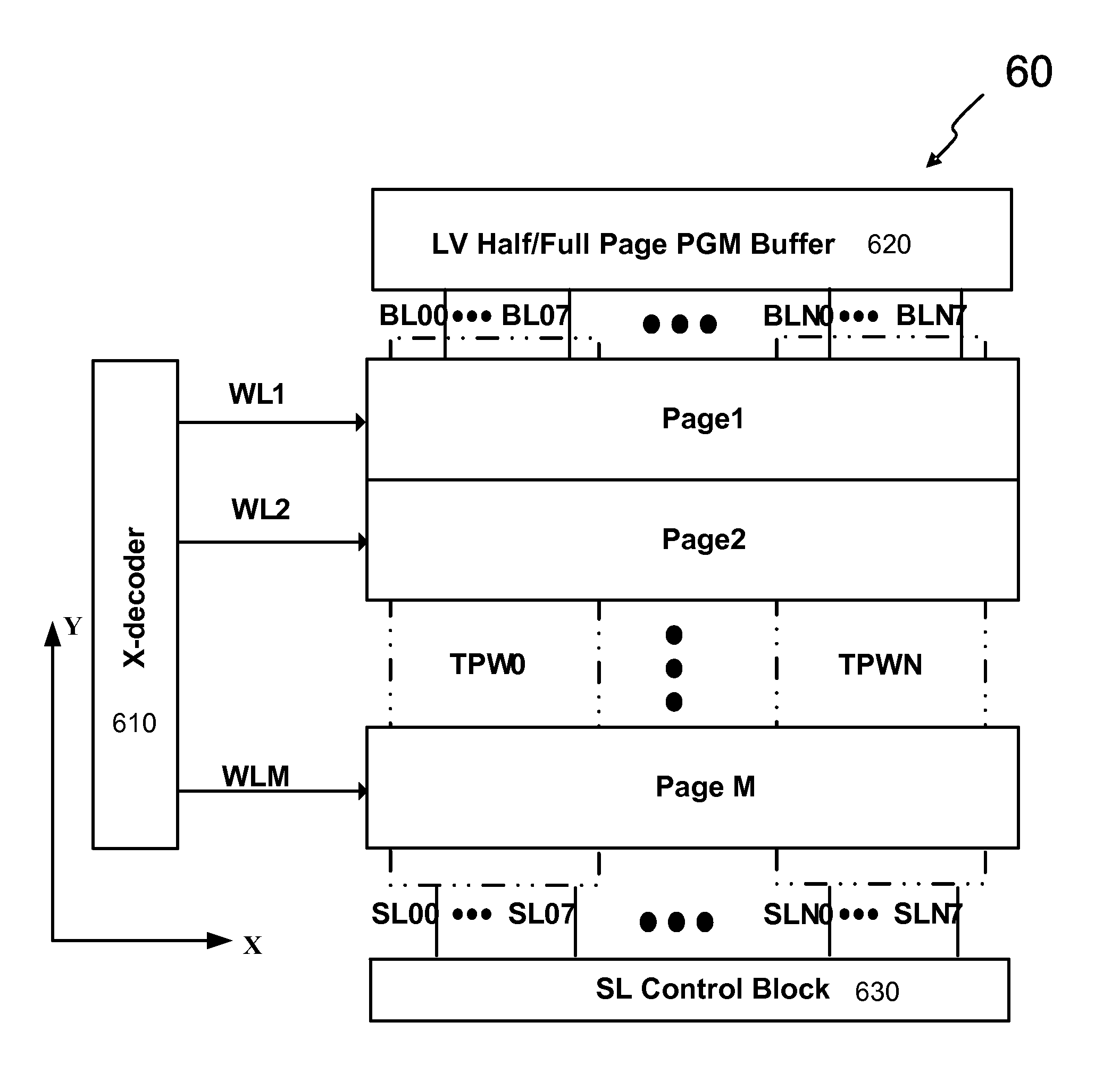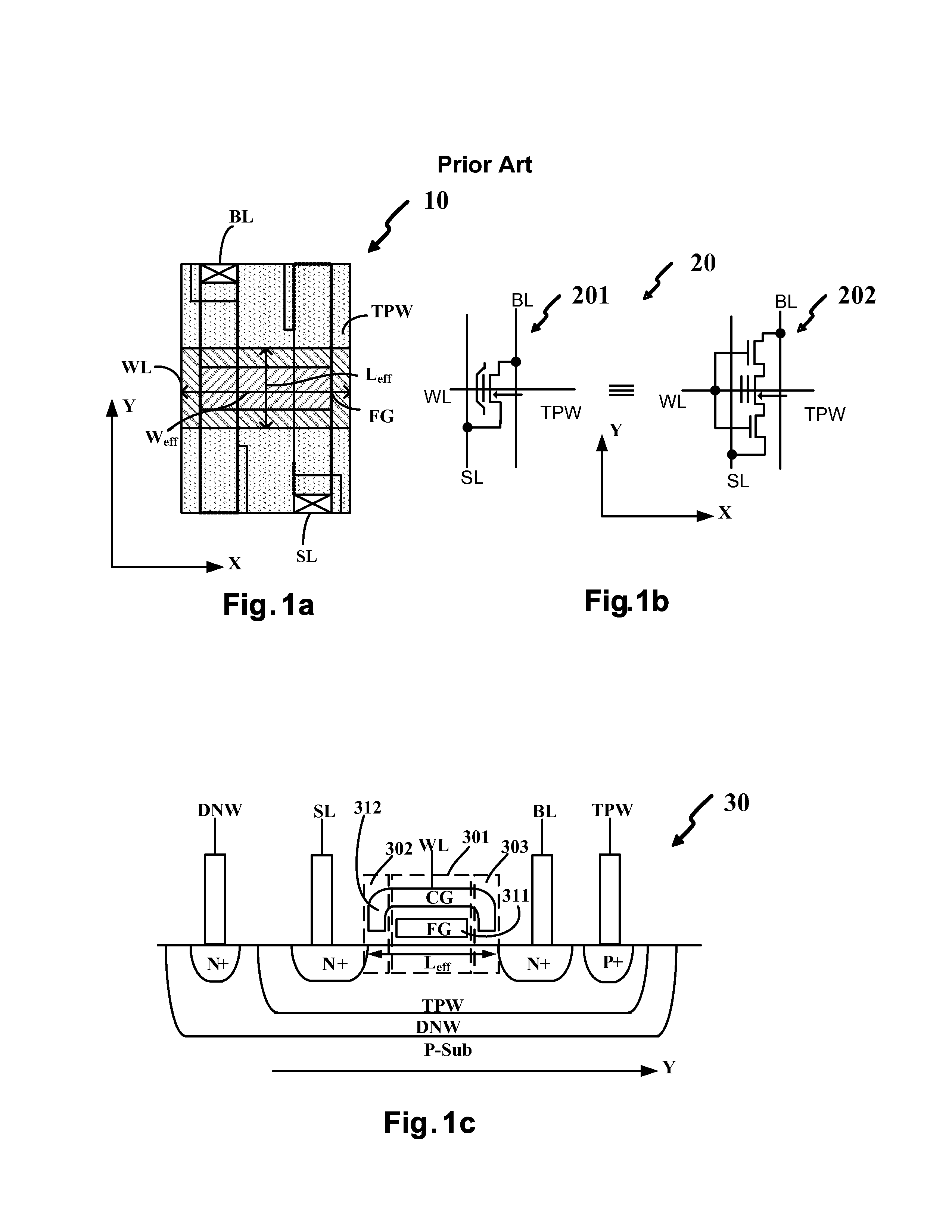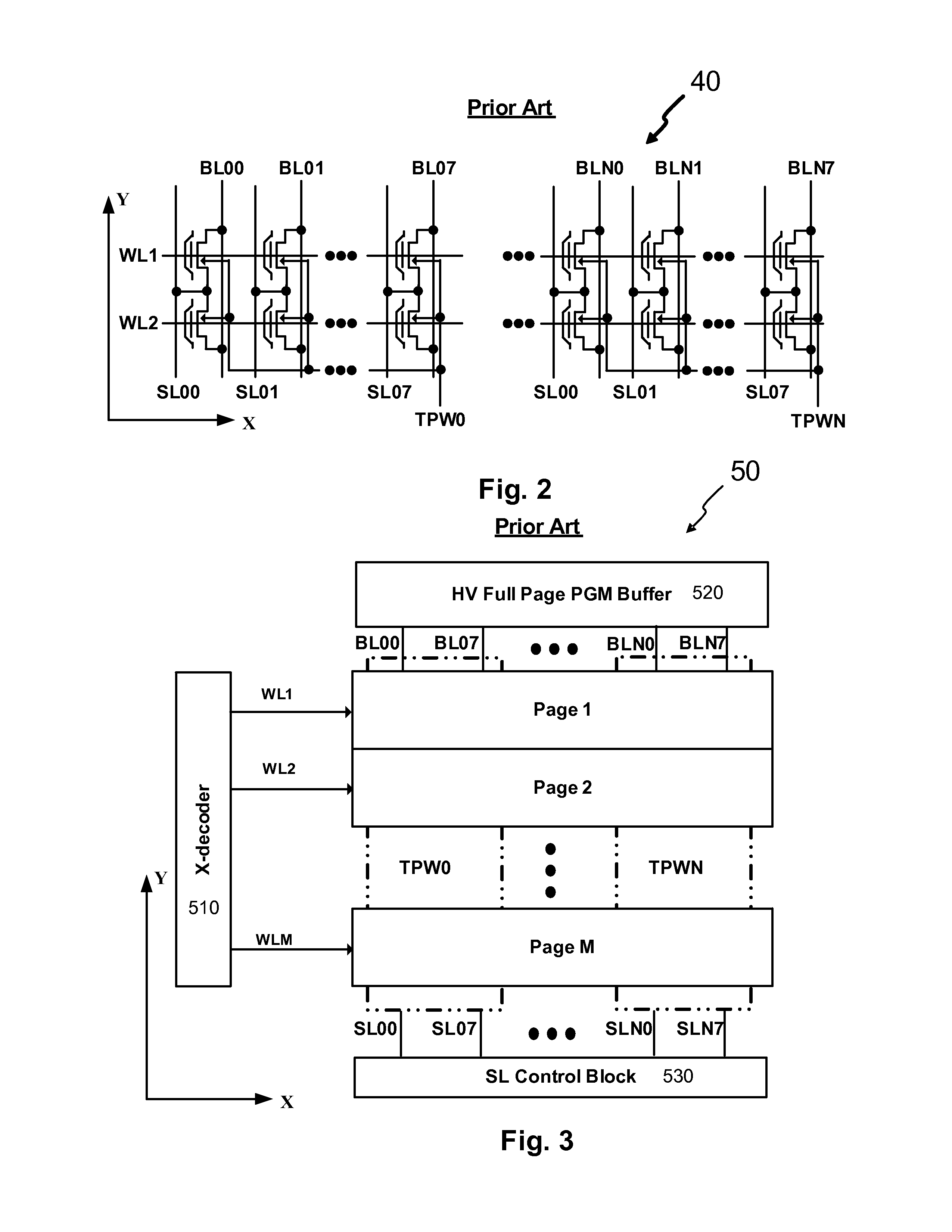NEW 1T1b AND 2T2b FLASH-BASED, DATA-ORIENTED EEPROM DESIGN
a data-oriented, eeprom technology, applied in the field of new 1t1b and 2t2b flash-based, data-oriented eeprom design, can solve the problems of limiting the channel length scaling, high bit line programming voltage, and large cell size that is the largest among the nonvolatile memory structures, so as to reduce the stress on the 1t1b eeprom cell and the sl-select and bl-sel
- Summary
- Abstract
- Description
- Claims
- Application Information
AI Technical Summary
Benefits of technology
Problems solved by technology
Method used
Image
Examples
Embodiment Construction
[0071]The present presentation relates to the continuation of improvement over the traditional EEPROM data-oriented Combo NVM design. But unlike an disclosure by the same inventors with the title of “A EEPROM-based, Data-oriented Combo NVM design” based on traditional large 2T1b FLOTOX-based EEPROM cell structure and process technology, the present invention provide a novel operation scheme of an 1T1b Data-oriented EEPROM cell design, which utilize a Flash-based cell structure and process made by prior art. The advantage of this single-bit 1T EEPROM cell size is about ⅓ of 90λ2 of the traditional 2T1b FLOTOX-based EEPROM cell but with a disadvantage in its operation scheme it shows of inferior of P / E endurance cycle of 300K, rather than 1M.
[0072]By contrast, when compared to the traditional NOR flash cell size, this flash-based 1T1b EEPROM cell is about 1.5× larger but its performance of the P / E endurance of 300 K is superior to the traditional NOR flash cell with 100 K cycles only....
PUM
 Login to View More
Login to View More Abstract
Description
Claims
Application Information
 Login to View More
Login to View More - R&D
- Intellectual Property
- Life Sciences
- Materials
- Tech Scout
- Unparalleled Data Quality
- Higher Quality Content
- 60% Fewer Hallucinations
Browse by: Latest US Patents, China's latest patents, Technical Efficacy Thesaurus, Application Domain, Technology Topic, Popular Technical Reports.
© 2025 PatSnap. All rights reserved.Legal|Privacy policy|Modern Slavery Act Transparency Statement|Sitemap|About US| Contact US: help@patsnap.com



